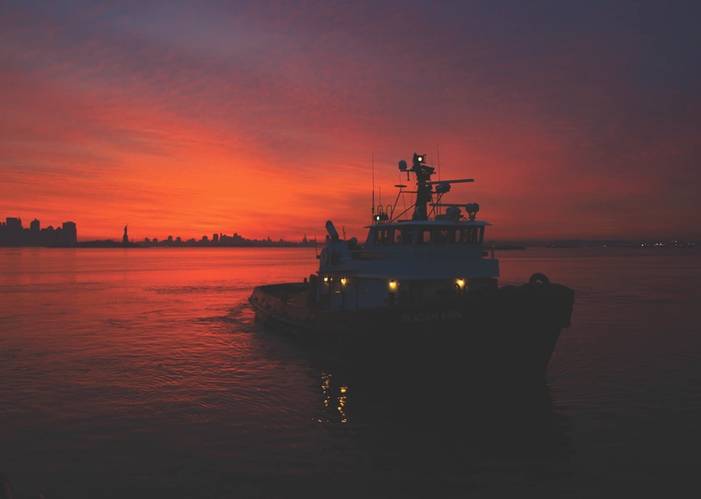On June 20, 2016, the U.S. Coast Guard promulgated its long awaited or dreaded (depending on your perspective) final rule regarding inspection of towing vessels. The new regulations, which will enter into effect on July 20, derive from a 2004 legislative amendment which added towing vessels to the list of ‘vessels subject to inspection’. That statute also authorized regulations to establish a safety management system for towing vessels and maximum hours of service and related provisions for individuals engaged on towing vessels. Many of the new regulatory provisions, including the requirement for each covered towing vessel to have a valid certificate of inspection (COI) will be phased in over the next six years. Consequently, this project will be eighteen years between conception and full delivery.
The rulemaking, as promulgated, establishes safety regulations governing the inspection, standards and safety management systems of U.S. towing vessels of 26 feet or more in length and U.S. towing vessels of any length that move barges carrying hazardous material in bulk. The regulations also authorize the use of approved third-party auditors and surveyors for routine towing vessel inspections.
The Coast Guard has deferred, for now, establishment of new requirements for hours of service or crew endurance management for mariners aboard towing vessels. Those issues will be the subject of a separate rulemaking.
One important impact of the new regulations is that, once they enter into effect, the U.S. Coast Guard will be the principal federal agency overseeing towing vessels. The Occupational Safety and Health Administration (OSHA) will immediately lose its authority over inspected towing vessels. The towing industry has chaffed for years at being subject to the safety regulations of two separate (and sometimes conflicting) federal agencies. In addition, state agencies will lose much of their authority over covered towing vessels. The regulations establish a comprehensive safety system that includes company compliance, vessel compliance, vessel standards and oversight in a new Code of Federal Regulations (CFR) subchapter [Subchapter M] of Title 46 dedicated solely to towing vessels. These regulations are intended to reduce the risk of such deaths, injuries, casualties and marine environmental incidents. The Officer in Charge Marine Inspection (OCMI) is provided broad discretion to establish manning requirements for individual towing vessels taking into account their trade, route, construction and arrangement. Not later than July 22, 2019, each company must implement a health and safety plan, documenting compliance with Subchapter M, including its recordkeeping provisions. The company must also ensure that all persons on its towing vessels comply with the health and safety plan.
Organizations operating towing vessels subject to inspection under Subchapter M will be required to elect inspection under one of two options. One option would involve the annual Coast Guard inspection regime, similar to that applicable to most other inspected vessels. The second option would involve development of an acceptable Towing Safety Management System (TSMS). The TSMS, tailored to take into consideration the organization’s size, structure and service, is the one that the Coast Guard expects to be the favored option. It would describe the organization’s procedures for ensuring compliance with the applicable vessel and personnel requirements. TSMS compliance would be verified through third-party organizations and documented by issuance of TSMS Certificates. Towing vessels operating under the TSMS option would receive audits and surveys by USCG-approved third party organizations at a designated frequency. In addition, the Coast Guard will conduct compliance examinations at least once every five years, along with additional unannounced compliance checks based on risk. The risk will be determined through analysis of management and vessel safety history.
The Coast Guard will provide direct oversight of the third-party organizations that conduct TSMS audits and surveys through a process of observation and approval. This process, which could be viewed as a specialized alternate compliance program (ACP), will involve review and approval of the organization’s application for approval, as well as the individual auditors and surveyors employed. Random visits will be made to their offices and of their actual audits and surveys on site. The Coast Guard will also consider the organization’s history when evaluating requests for renewal of their approvals, to occur at least every five years. Approvals may also be revoked for failure to comply with the conditions of the approval.
Certificates of Inspection (COIs) will be issued by the Coast Guard to vessels based on successful compliance with the inspection requirements, as evidenced through either the traditional USCG inspection process or the new TSMS option. Subject to subsequent change through rulemaking, the Coast Guard will impose an annual user fee of $1,030 after the initial Certificate of Inspection (COI) inspection. Companies with more than one existing towing vessel are provided with a calendar for COI compliance. By July 22, 2019, at least 25 percent of the towing vessels must have a valid COI on board; rising to 50 percent by July 20, 2020; then to 75 percent by July 19, 2021; and finally to 100 percent by July 19, 2022. Companies with only one existing towing vessel have a deadline of July 20, 2020. A new towing vessel must obtain a COI before it enters service.
The portions of Subchapter M regarding certification; vessel compliance; the Towing Safety Management System (TSMS); and Third-Party Organizations (TPOs) enter into effect on July 20, 2016. The effective date of the remaining portions of Subchapter M, consisting of operations; lifesaving; fire protection; machinery and electrical systems and equipment; and construction and arrangement, has been delayed for two years, until July 20, 2018, so as to give the newly regulated community an opportunity to accommodate the new requirements. In addition, various ‘grandfather’ provisions will apply to existing towing vessels. Newly constructed towing vessels as well as those undergoing major conversions will not benefit from the grandfathering provisions. One section of the new regulations, though, will enter into effect immediately on July 20, 2016. Each covered vessel with installed bulwarks must have sufficient freeing ports or scuppers and closing devices must be provided for deckhouse and full penetrations that open to the exterior. This is a commonsense requirement and few vessels should be adversely impacted. Regardless, the cost of compliance will be substantial. The Coast Guard estimates that 1,086 companies and 5,509 vessels will be covered by the new regulations. The initial phase-in costs for the first two years are estimated to total between $15.8 and $26.5 million annually. Subsequent annual costs are estimated at between $19.2 and $56.4 million, with a 10-year total cost to industry of $227.7 million. The benefits, though, in the form of decreased fatalities, injuries, casualties and environmental damage, are estimated at $325.6 million over the same 10-year period, resulting in a positive cost-benefit ratio. Analysis of five-year averages reveals that towing vessels and tows are involved in 29.8 percent of all merchant mariner deaths and injuries in U.S. waters; 67.5 percent of all collisions, allisions and groundings; and 30.2 percent of all chemical discharge incidents and oil spills of greater than 100 gallons.
That said, the costs will be spread unevenly across the U.S. towing industry. Some companies already have fully-developed safety management systems, such as the American Waterways Operators (AWO) Responsible Carrier Program (RCP), and many have invested in new equipment in recent years. For those companies for which a safety management system is new and whose towboats are aging, the financial costs and cultural shift may prove daunting, even with the phase-in period and the various grandfather clauses.
Tne portion of the new regulations that cannot be overlooked is the expanded recordkeeping requirement. Each covered towing vessel will be required to maintain, either physically or electronically, a towing vessel record (TVR) or its equivalent. Items that must be recorded include, but are not limited to, personnel records; safety orientation; drills and instruction; examinations and tests; operative navigational safety equipment; navigation assessment; navigation safety training; oil residue discharges and disposals; inspection of towing gear; and fire-detection and fixed fire-extinguishing. Depending on current practice and how this new provision is implemented, the burden of this recordkeeping requirement could be significant. In view of the fact that these will be the first pervasive regulations for the towing vessel industry, the Coast Guard intends to conduct a broad outreach program to acquaint merchant mariners and towing companies with the new requirements. These outreach efforts will include in-person and online support, guidance for operators and third-party organizations, dissemination of ongoing frequently-asked-questions (FAQ), plan review information and information regarding compliance options.
The Coast Guard is deliberately slow walking its implementation of the towing vessel inspection regime. The goal is not to drive companies out of business, but rather to assist (or prod to the extent necessary) responsible towing companies in raising their standards over time so as to reduce deaths, injuries, casualties and environmental damage.
The Author
Dennis L. Bryant is with Maritime Regulatory Consulting, and a regular contributor to Maritime Reporter & Engineering News
as well as online at MaritimeProfessional.com.
t: 1 352 692 5493

















